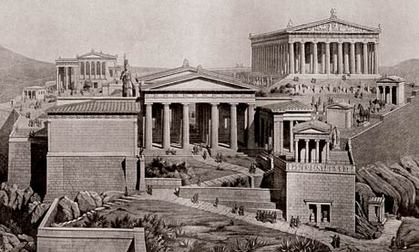World History 9 Course Overview

Students will be taught how to identify broad patterns and processes that explain change and continuity over time. They will use critical-thinking and communication skills to investigate the historical roots of contemporary issues and present their conclusions. Students must be prepared to take on a rigorous reading and writing load throughout the year and will be required to make comparisons across time and cultures. Students will be regularly analyzing primary sources in order to prepare them for future study at IB level. Students will be become competent in being able to identify the content and bias of primary sources and what the context of the source tells us about the content of the source. Students will learn how to use SOAPStone and PERSIA charts to aid their analysis of primary sources and comparing different civilizations.
Themes
The course examines World History using five overarching themes to identify the broad patterns and processes that explain change and continuity over time.
1.1 HUMAN ENVIRONMENT AND INTERACTION
1.2 EMPIRE BUILDING EXPANSION AND CONFLICT
1.3 ECONOMIC SYSTEMS
1.4 POWER AND AUTHORITY AND TRANSFORMATIONS OF SOCIAL STRUCTURES
1.5 CULTURAL INTERACTION
Themes
The course examines World History using five overarching themes to identify the broad patterns and processes that explain change and continuity over time.
1.1 HUMAN ENVIRONMENT AND INTERACTION
1.2 EMPIRE BUILDING EXPANSION AND CONFLICT
1.3 ECONOMIC SYSTEMS
1.4 POWER AND AUTHORITY AND TRANSFORMATIONS OF SOCIAL STRUCTURES
1.5 CULTURAL INTERACTION

Assessment
High school has moved to a semester grading system which will be different to what you were used to in middle school. Your semester 1 grade is made up of the following:
High school has moved to a semester grading system which will be different to what you were used to in middle school. Your semester 1 grade is made up of the following:
- Assignments & unit tests = 55%
- Student notebook or Drive folder = 6.66%
- Class participation = 5%
- Semester Exam = 33.33%
